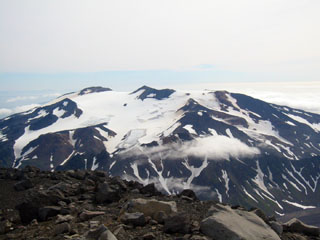Report on Takawangha (United States) — 12 July-18 July 2023
Smithsonian Institution / US Geological Survey
Weekly Volcanic Activity Report, 12 July-18 July 2023
Managing Editor: Sally Sennert.
Please cite this report as:
Global Volcanism Program, 2023. Report on Takawangha (United States) (Sennert, S, ed.). Weekly Volcanic Activity Report, 12 July-18 July 2023. Smithsonian Institution and US Geological Survey.
Takawangha
United States
51.873°N, 178.006°W; summit elev. 1449 m
All times are local (unless otherwise noted)
AVO reported that earthquake activity near Takawangha had decreased in both rate and magnitude. The rate of earthquakes had been about three events per day during the previous three weeks, much lower than the 150 events per day recorded during the peak of the swarm in mid-March. Recent satellite images did not indicate any deformation on the island and no other signs of volcanic unrest had been detected. On 18 July the Volcano Alert Level was lowered to Normal (the lowest level on a four-level scale) and the Aviation Color Code was lowered to Green (the lowest color on a four-color scale).
Geological Summary. Takawangha is a youthful volcano with an ice-filled caldera on northern Tanaga Island, near the western end of the Andreanof Islands. It lies across a saddle from historically active Tanaga volcano to the west; older, deeply eroded volcanoes lie adjacent to the east. The summit of the dominantly basaltic to basaltic-andesite volcano is largely ice covered, with the exception of five Holocene craters that during the last few thousand years produced explosive eruptions and lava flows that reached the lower flanks. No historical eruptions are known, although radiocarbon dating indicates explosive eruptions have occurred within the past several hundred years.
Source: US Geological Survey Alaska Volcano Observatory (AVO)

